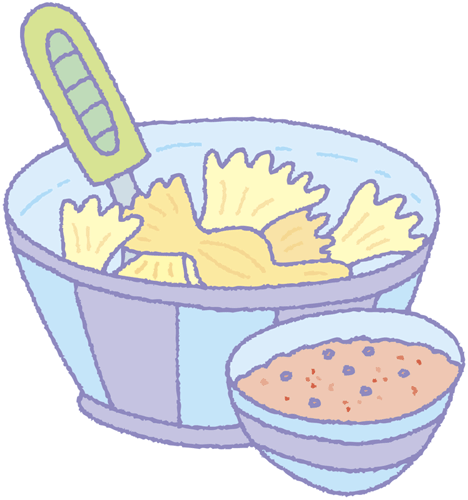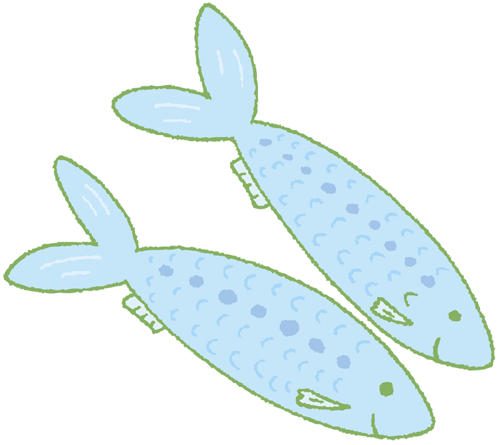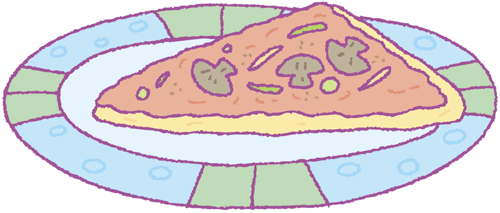As your toddler begins to exert her authority
in all areas of her life, she will soon catch on to the idea that food
is an emotive issue, and that she’ll get a good reaction if she refuses some foods, and demands others. Most toddlers experience periods of fussy eating; remain calm, and continue to offer the foods you want her to eat.
| Q: |
My toddler picks out the vegetables, from his meals. What can I do?
| | A: |
Lots of little ones seem to have an inbuilt radar when it comes
to pinpointing any trace of vegetables, and sometimes fruit, in food. It
may be that kids instinctively know that we want them to eat fruits and
vegetables, and therefore use them as a tool to exercise their will and
right to make their own choices, on the road to independence. My advice
is to get crafty!
You can disguise vegetables by blending them into a tomato sauce, and serving with pasta (see Hidden Vegetable Tomato Sauce),
or try adding puréed vegetables to soups, stews, and casseroles. It’s a
good idea to leave a few “chunks,” allowing your toddler the
satisfaction of picking them out before unwittingly consuming more. You
can sneak veggies into wraps, cannelloni, lasagna, quesadillas, or under
grated cheese on pizza. Mix puréed butternut squash into a cheese sauce
to make a nutrient-packed macaroni and cheese, or mash carrots into
mashed potatoes for a delicious cottage pie topping. Some children also
prefer raw vegetables, like cucumber sticks or strips of sweet pepper.
Finally, try him with vegetables that he hasn’t seen before that perhaps
look more fun than a plate of broccoli, such as corn or asparagus.
|
| Q: |
My toddler will only eat plain foods with no sauces; can you think of ways to tempt her?
| | A: |
Sometimes “dips” are more popular than sauces, so offering her
pasta sauce in a separate bowl into which she can dip her pasta shapes
may appeal, or a peanut sauce for her chicken skewers may work well.
Many kids like to see their food separated on the plate, and in its
simplest form. This doesn’t necessarily mean they don’t like sauces, it
just means that they like things plain, obvious, and simple, and they
like to know exactly what is on their plates. Try putting her sauce on
the side, and she may try a little.
There is no reason,
however, that your toddler’s food has to be bland. You can marinate
fish, chicken, and tofu to give it wonderful flavors, and use all sorts
of different herbs and spices.
|

| Q: |
How can I “hide” vegetables when my toddler will eat only plain food?
| | A: |
It’s obviously much more difficult when you are unable to purée
or finely chop vegetables and other healthy foods into sauces. However,
it’s not impossible!
Try “stuffing” her
chicken breast with cheese and spinach or other vegetables, or adding
puréed or chopped vegetables to fish or chicken balls, which can be
breaded and cooked. Purée vegetables into “dipping” sauces, or add
grated vegetables to beef or chicken to make tasty meatballs.
Add grated or chopped vegetables to scrambled eggs, quiches, omelettes,
and even cakes and muffins. Every little bit you manage to get into
your toddler will make a difference.
|
| Q: |
Should I ever force my child to eat something she refuses?
| | A: |
It’s never a good idea to force-feed a child, not only because it
brings a confrontational, negative element to food and eating, which
should be associated with fun and pleasure, but because it can, in
extreme cases, lead to serious problems with food, including phobias.
Furthermore, if you force your child, you are telling him that you are
anxious about what he’s eating, which gives him the ammunition he needs
to use food as a weapon.
Involving your little one
in family meals can help him to broaden his palate, because he’ll want
to do what everyone else is doing. Sometimes suggesting “just one
spoonful” of everything or, indeed, giving one “veto”— the choice of one
food he doesn’t have to eat—will make him feel empowered enough to do
as requested.
A reward sticker chart in
the kitchen is also a good idea—give him a sticker for every new food
he tries, and when he has a certain amount of stickers, he gets a small
reward.
|
| Q: |
Should I allow my toddler to decide what she will eat?
| | A: |
There is no harm in giving choices to your toddler, but only when
she is encouraged to choose between several healthy options that you
want her to eat. Giving her free reign will probably lead to a diet of
cookies, chips, and chocolate milk. You can, however, diffuse a tricky
situation by allowing her to choose which of the three vegetables
offered she wants to eat, or getting her involved in the planning of
meals to some extent: shall we have broccoli or peas tonight? This
empowers children and can encourage them to eat food they wouldn’t
normally eat.
|
| Q: |
My child will only eat fruit if it’s cooked; does it still have some nutritional value?
| | A: |
Vitamins and minerals, in particular vitamin C, are easily
destroyed when food is cooked at high heat, so your child won’t be
getting quite as much as he would if he was eating fresh fruit as well.
However, some nutrition is better than none, and as long as he is
getting a variety of different cooked fruits, this is fine in the short
term. One positive thing about serving cooked fruit is that you can
normally blend several together, thereby increasing the overall number
of different nutrients. Try to lightly steam fruit rather than boiling,
or perhaps bake it wrapped in foil, which helps to preserve nutrients to
some extent.
Continue to
offer fresh fruit alongside—perhaps making it look more appealing by
creating exotic fruit platters with a yogurt and honey dip, or making
melon balls, or serving kiwi fruit in an egg cup. Encourage your child
to help you make smoothies, which offer a fantastic boost of fresh-fruit
nutrients . Also make fresh fruit popsicles or banana ice cream together for some tasty treats that are incredibly healthy too.
|
| Q: |
How can I make fish more appealing?
| | A: |
At first, kids tend to enjoy white fish, such as cod, sole, and
plaice. Once your little one becomes accustomed to the flavor and
texture, you can move on to more flavorful oily fish. All fish is
healthy, but oily fish, such as salmon, sardines, and fresh tuna, is the
healthiest for kids, because of the high levels of omega oils now known
to improve health and behavior on many levels.
Fish can be poached, flaked, breaded and served as goujons,
or minced and served in little balls. Fish pies are a favorite with
little ones, especially if served in individual ramekins. Stir canned
tuna into pasta sauces, or use as a sandwich filling. You may need to
cover fish with a lemon or hollandaise sauce, or even cheese or ketchup
to encourage your little one to try it. Whatever you do, make sure you
remove all scales and bones—you don’t want to put her off for good!
|

| Q: |
How can I tempt my toddler to eat breakfast?
| | A: |
Toddlers often wake bursting with energy and desperate to get on
with a new day. Stopping for breakfast can seem boring, no matter how
hungry they are! A fast of 12 or 14 hours may simply not be enough to
encourage your toddler to the table, when there is so much to do.
The best advice is to
offer a little play time, and give him some choices. He may not be
hungry at the time, but he’ll be more likely to eat something he has
decided he wants to eat. A yogurt and fruit smoothie, alongside a few
squares of peanut butter on toast or a handful of dry breakfast cereal
is fine (the Maple oat clusters
recipe is perfect for this). If he chooses the fruit for his smoothie,
he may also be more inclined to drink it. There’s also no reason why
breakfast has to include traditional breakfast foods. A ham and cheese
or egg sandwich with a glass of fruit juice is perfectly acceptable, as
is a little of last night’s pizza or pasta. Serve his favorites. As long
as they are balanced and healthy, they’ll give him enough fuel to get
through the morning.
|

| Q: |
How can I encourage my child to eat foods that aren’t “soft”?
| | A: |
Some kids are late “chewers,” and are just learning to control
the muscles in their mouth; others may be late teethers (or getting a
new crop of teeth, in particular, molars), which can make chewing
uncomfortable. Make sure you continue to offer plenty of finger foods;
if she becomes accustomed to a mix of different textures from her finger
foods, she’ll soon be able to manage main meals. Slowly add soft lumps,
such as a little rice or tiny pasta shapes, to her regular meals, so
that she learns to manage them. If she regularly chokes or gags, it’s
worth seeing your doctor for reassurance.
|
| Q: |
Is there any way to introduce foods with more unusual textures?
| | A: |
Toddlers can be notoriously fussy about things that don’t look or
taste familiar. For example, fairly bland foods such as mushrooms can
produce horror because the consistency is unusual. Similarly, stringy
foods like celery and some cuts of beef can cause problems, as can
crunchier foods such as brown rice, chopped nuts, and seeds.
The best thing to do
is to continue to offer a wide variety of foods with different
textures. Offer raw fruits and vegetables with tasty dips, and swap over
to a crunchy peanut butter rather than smooth to accustom him to chew
and swallow pieces of nuts. Gradually
is the key word, and it does help to finely chop problem foods, such as
seeds and nuts, at first. Once again, finger foods are the perfect way
to provide a variety of different textures. Mixing flavors can also help
to encourage the process; for example, mashing bananas with avocado, or
adding dried fruit to a favorite yogurt. |
|